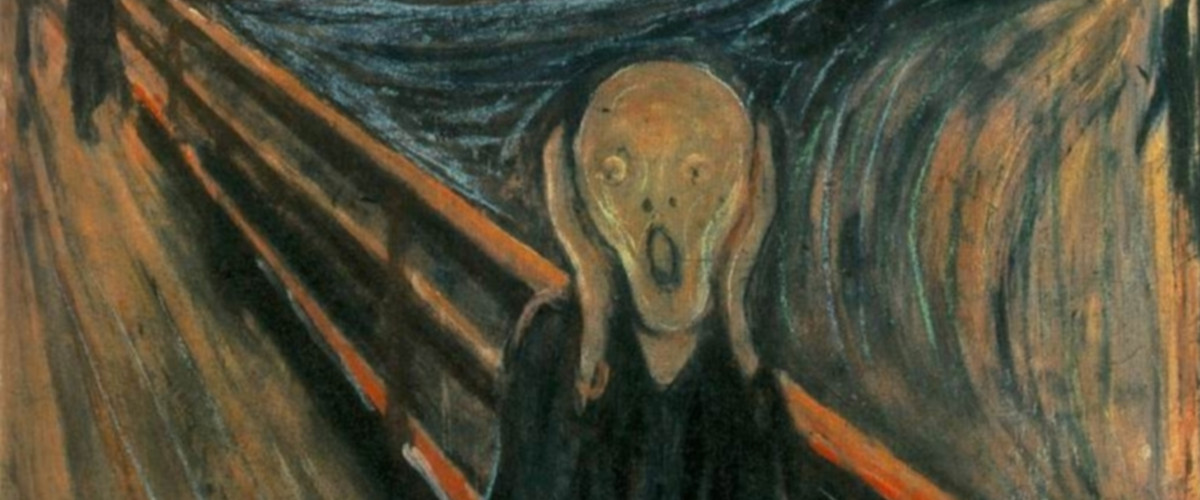Two facts:
1. Cam models are businesswomen. (Alexandra Georgia says so.)
2. Running a business can be scary. (But it doesn’t have to be.)
When you run your own business, the only person making sure paper comes in is you. And when you run your own business, the only person you have to answer to is — you guessed it — you, in terms of both successes and failures. So really, how is that anything but scary?
One thing successful people seem to have in common is a set of personalized guiding principles that help them avoid letting fear shape their decision-making processes. Where in the world did those principles come from? How can we tap into our own?
According to Andy Molinsky — a professor, author and “thought leader” who helps people develop the insight and courage necessary to act outside their personal and cultural comfort zones — the first step is learning to differentiate legitimate concern from unrealistic and/or excessive fear.
“One of the most common questions I get when speaking about stepping outside your comfort zone is this: ‘How do I know if I’m avoiding something out of fear or out of a true and honest lack of interest?’” Molinsky recently wrote in an article for Psychology Today.
In other words, how do you know when you decide not to enter that contest, ask that payout question or pursue that income-diversification opportunity that it’s not fear making you stop short of taking a risk, versus you legitimately not wanting to do something?
Here’s Molinsky’s current best answer to that question, which involves a step-by-step strategy for figuring it out.
Do a thought experiment.
Imagine for a minute you were somehow able to erase, at least temporarily, the fear and anxiety you feel about whatever you’re contemplating avoiding. If this were essentially anxiety-free, is it something you’d actually like to do or learn to do? If the answer is yes, that’s your first hint fear might be driving your decision.
Per Molinsky, “Remember, courage is the ability to take action despite the fear you experience.”
Do some mental accounting.
This is your classic pros/cons list. Take stock of the fears and anxieties you experience about the situation, alongside the potential upsides. What reasons do you have to take on this next business adventure?
“Sometimes taking a step back and actually writing this down helps clarify things — at least for me,” Molinsky explained.
Compare the present with your past.
Think back to other points in your life when you experienced similar feelings and/or struggles. Obviously, there will never be an exactly comparable situation, but chances are there is something you can connect from your past with your present, at least in terms of emotional response. Think about situations where you didn’t take action. In retrospect, what do you wish you had done? Also, think about the reverse: Are there situations where you took action and regretted it?
“In the end, it’s not easy to parse out legitimate concern from excessive and unrealistic fear — or a true lack of interest from a manufactured and over-rationalized lack of interest,” Molinsky said. “But by asking these key questions of yourself, you’ll have a better shot of personal discovery and of making the best decision going forward.”
The best part about Molinsky’s step-wise plan is its simplicity. By reflecting in this manner on work-related decisions you face, you may be able to take a big enough step away that you get simple clarification. Not every decision is so epic, but as a person running your own enterprise (like you are), every decision counts.
Also of note: If you determine you actually are letting fear shake your tree, Molinsky’s advice doesn’t mean you must act in opposition. But being aware of what’s feeding your potential choices is very important in terms of shaping your overall outlook on your work life and, ultimately, your life overall.
—
Email Erika and tell her about your lists.
Pretty sure Rihanna isn’t afraid of anything. Actually, she’s human, so she probably is — but what’s she’s not afraid of is work.
Image: detail from The Scream, Edvard Munch (oil, tempera, pastel and crayon on cardboard, 1893).










